Q36.5 Dottore Termico Light Mediterranea Jacket Review: genuinely the ideal jacket for most UK winter conditions.
A smart mix of fabrics and placements make for a highly versatile winter jacket
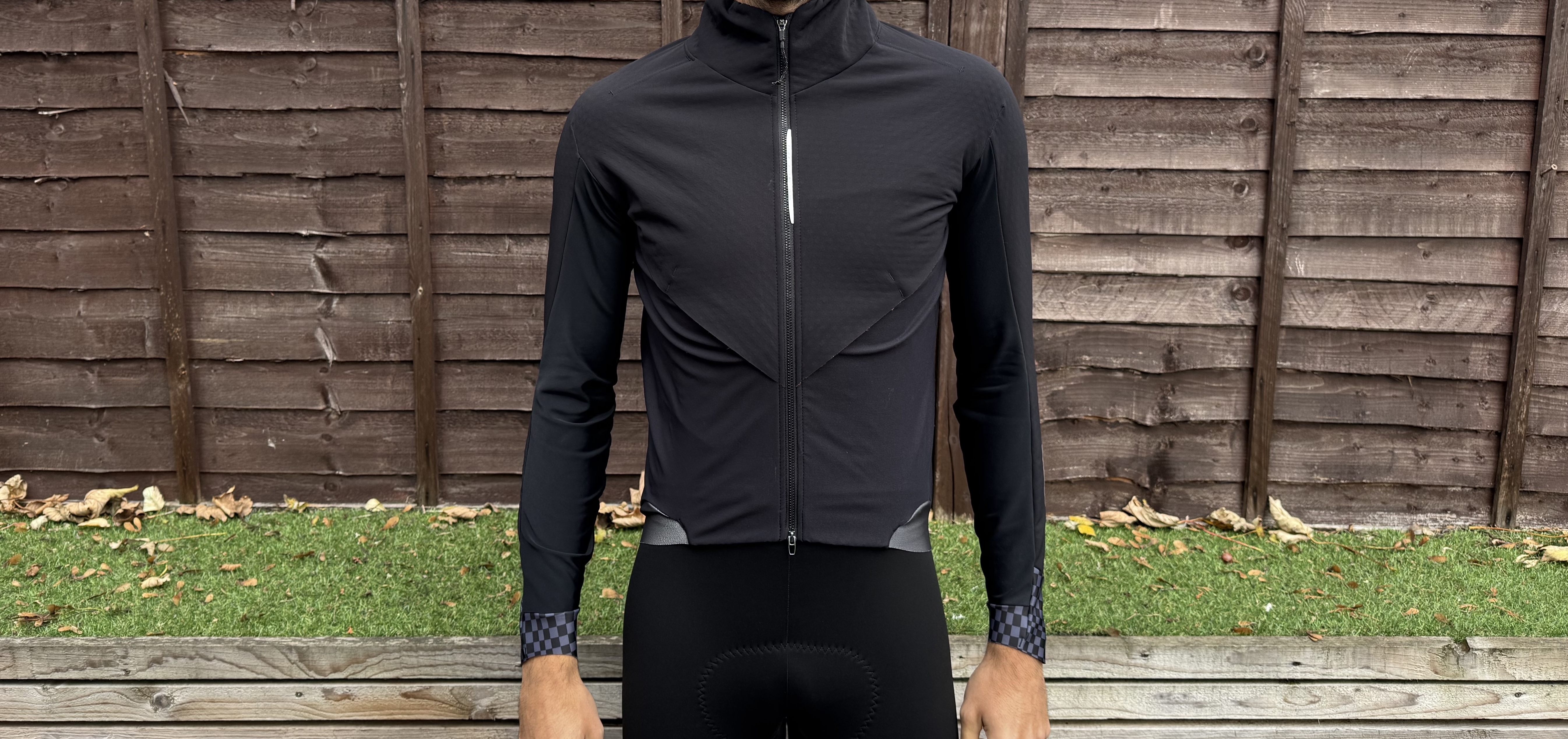
It’s not cheap or even good value, but the performance is exceptional offering great insulation balanced with breathability and being exceptionally comfortable. Genuine strives to be more environmentally friendly also help justify the price.
-
+
Highly versatile
-
+
Balances insulation and breathability
-
+
Neck is very comfortable
-
+
Zips are fantastic
-
+
Great in showers
-
-
Very expensive
-
-
Only one colour
-
-
Inner vest struggles to sit flat
You can trust Cycling Weekly.

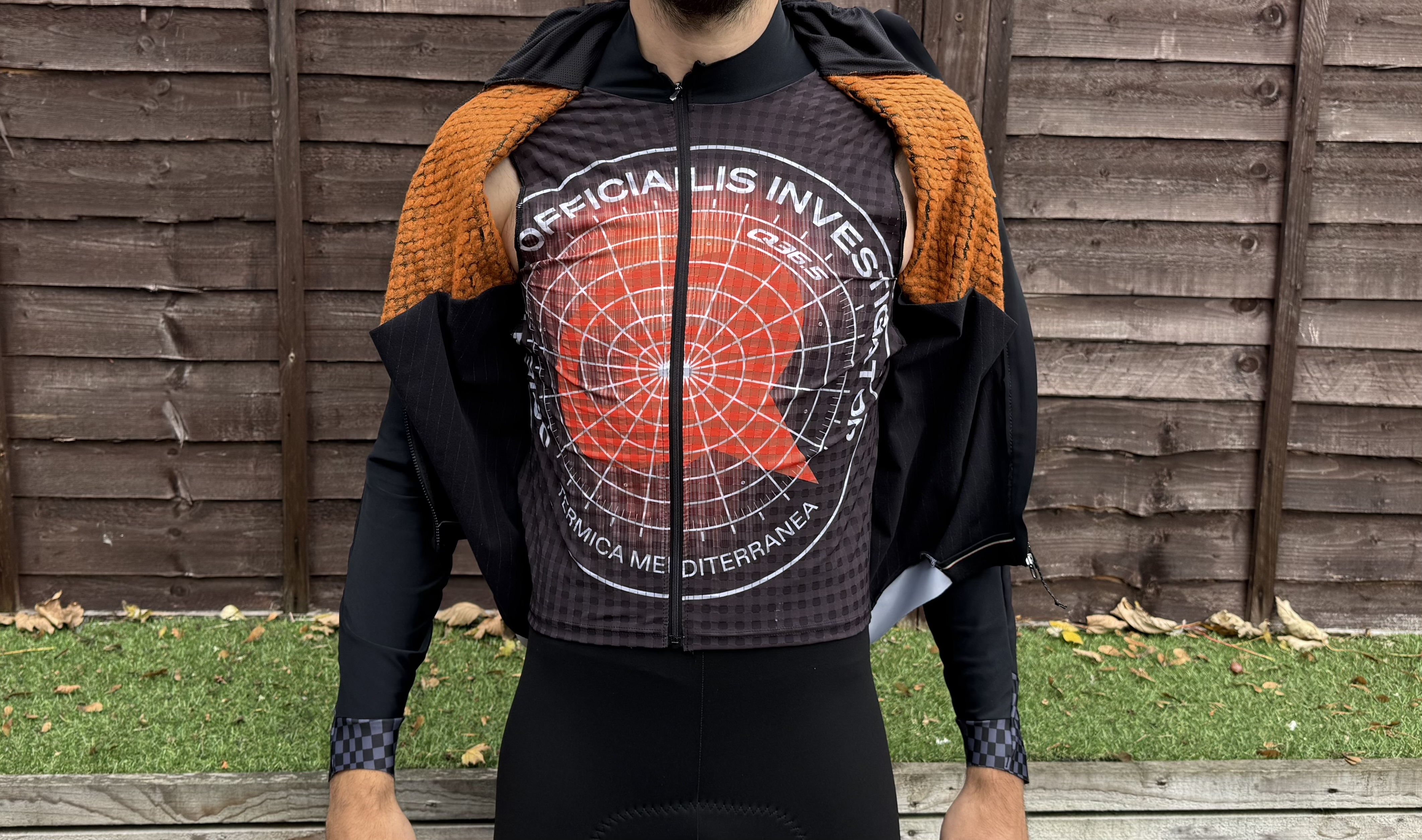
A jacket and internally stitched gilet combination is nothing new, but it's done well here
The Dottore Termico Light Mediterranea Jacket has been designed to fit halfway between Q36.5’s Dottore Termico heavy duty winter jacket, and the hybrid line of clothing. Q36.5 gives a usable temperature range of 2-12˚C, quite a wide operating window for a dual-layered jacket. As with most of its garments, it features a host of proprietary technology, all purposefully designed and positioned with the goal of maintaining an ideal internal body temperature.
Construction
Starting from the outside in, the external facing panels of the jacket on the chest, arms, shoulders, and back are all made up of a microporous membrane with 5000m water column rating. This is now a more common waterproof rating used in cycling gear as it provides protection in showers, but allows for greater breathability in the PFC free era of garments. This membrane is bonded to an ultralight nylon face which does not saturate with water and dries out very quickly.
On the internal facing of this material is the new Ultralight Air Insulation. This is found across the front and rear of the body from chest/scapula and up, as well as the front facing portion of the arms. It's far lighter than the previous Air Insulation, and bonded rather than stitched, eliminating the air layer that previously existed, while the small fibred fleece traps air allowing for movement of airflow as well as additional insulation. Other internal areas feature a more standard brushed facing with silver thread designed to trap heat but also provide an antimicrobial element.
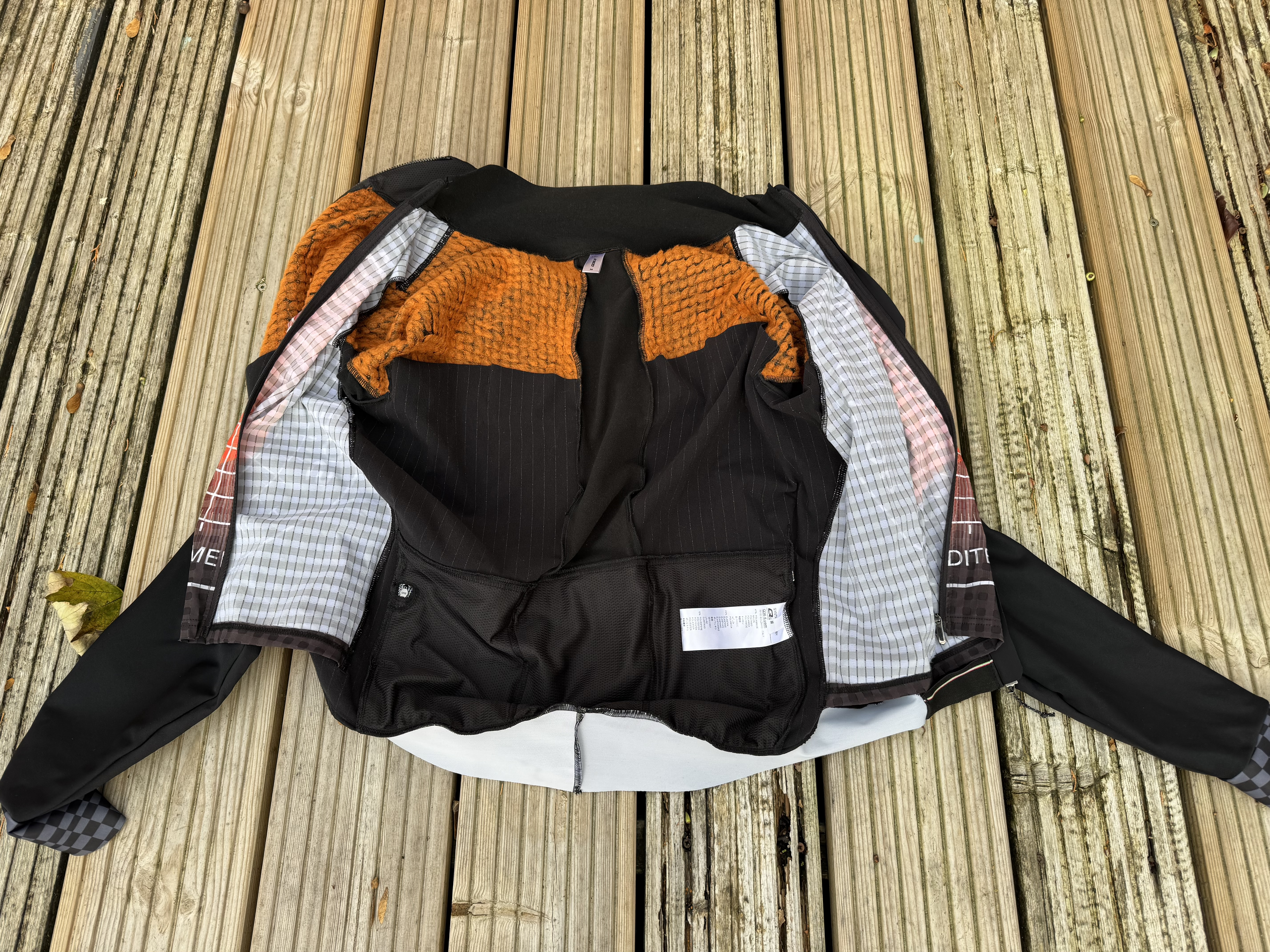

Inside of the jacket, there is an additional layer: an ultralight graphene threaded Clima vest. Clima is Q36.5’s super lightweight temperature evacuating line of kit, aimed for high summer. Here it provides an extra layer of coverage and air insulation, but allows for fast cooling when climbing, for example, where airflow decreases and effort/heat increases. The use of graphene is due to it being a super conductor for heat, so transfer across temperature gradients is faster. In this instance, as the body overheats, it should expel that heat faster once the jacket is opened up to the cooler external temperature.
Another feature of this jacket is the large amount of venting present. This jacket has been designed for a range of intensities, and as the intensity increases, so does the amount of heat we generate. By integrating vents both on the front as well as the rear, there is the option for this excess heat to dissipate, without creating openings that will allow cooler air in. This is further aided by a central panel on the rear, which is a far lighter and thinner fleece material, again aimed to extract excessive heat rather than create a boil-in-the-bag sensation that can be found with single material weather-resistant garments.
Finally, all cuffs are bonded on the sleeves and neck, with a soft touch material so as to provide comfort. The rear hem also features a broad reflective material as well as being slightly elastic to aid fit, with smaller reflective detailing on the front and sleeves. The external element of the jacket has a two-way zip, while the internal vest has a single zip. Finally three large cargo pockets adorn the rear, with a zip-up valuables pocket as well.
Sizes range from XS to XXL, while just the black colourway is available.
The latest race content, interviews, features, reviews and expert buying guides, direct to your inbox!
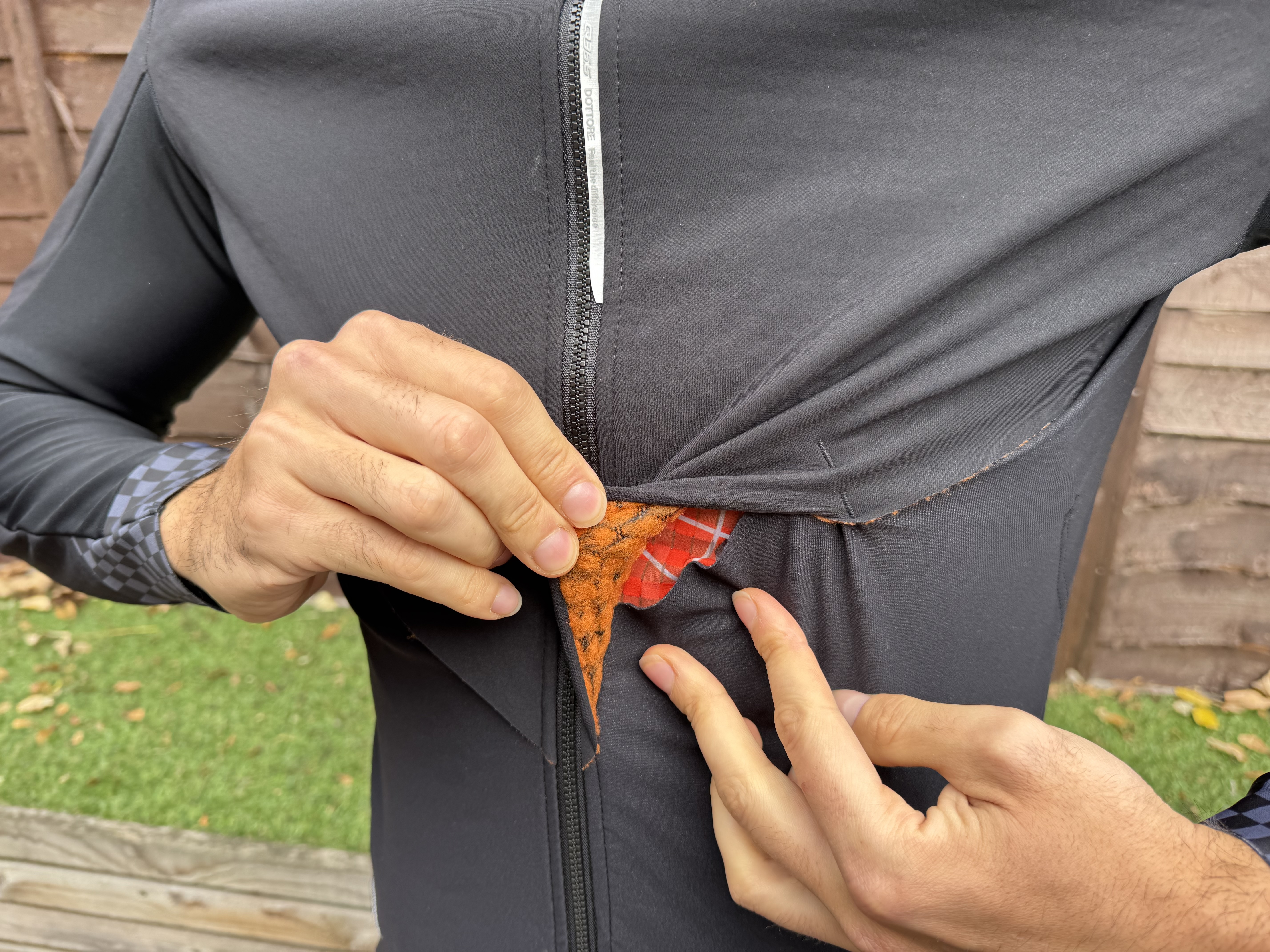
External vents help with breathability
The ride
The Q36.5 Termico Light Mediterranea Jacket frankly is what most people actually need out of a winter cycling jacket. The recommended temperature range of 2-12˚C is about spot on for most of the ridable winter conditions here in the UK; colder and the roads start to get treacherously icy while any milder makes it LS jersey and gilet weather.
Combining both a well-insulated jacket with an internal gilet system is nothing new. Back in 2014 Castelli came out with the Alpha jacket, which combined a standard jacket with a separate inner gilet to provide two layers in one jacket. Nowadays this is a far more common design featured in high end jackets like the Castelli Alpha, the Assos Equipe RS Johdah S11 jacket, and of course the Q36.5 Dottore Termico jacket range.
What is slightly novel about the Mediterranea is that this inner gilet is significantly less heavy duty with no immediate fleecing or insulating properties. In fact it uses the same Clima material that Q36.5 uses in the lightest of jerseys designed for the hottest conditions. Clima uses graphene yarns as part of the construction, but in this case it is almost better suited in my opinion than on the jersey. The clever thing about graphene is that it is a super conductor, and it works this way with heat transfer. Just think about an oven that is on, you put your hand in and it’s warm, but tolerable. You tough a metal tray in there and you burn yourself, due to metal being a better conductor of heat. The idea with graphene is that it transfers heat across a gradient. In the summer jerseys, it takes body heat and transfers it to the external surround under the principle that externally is cooler than a body at 36.5˚C.
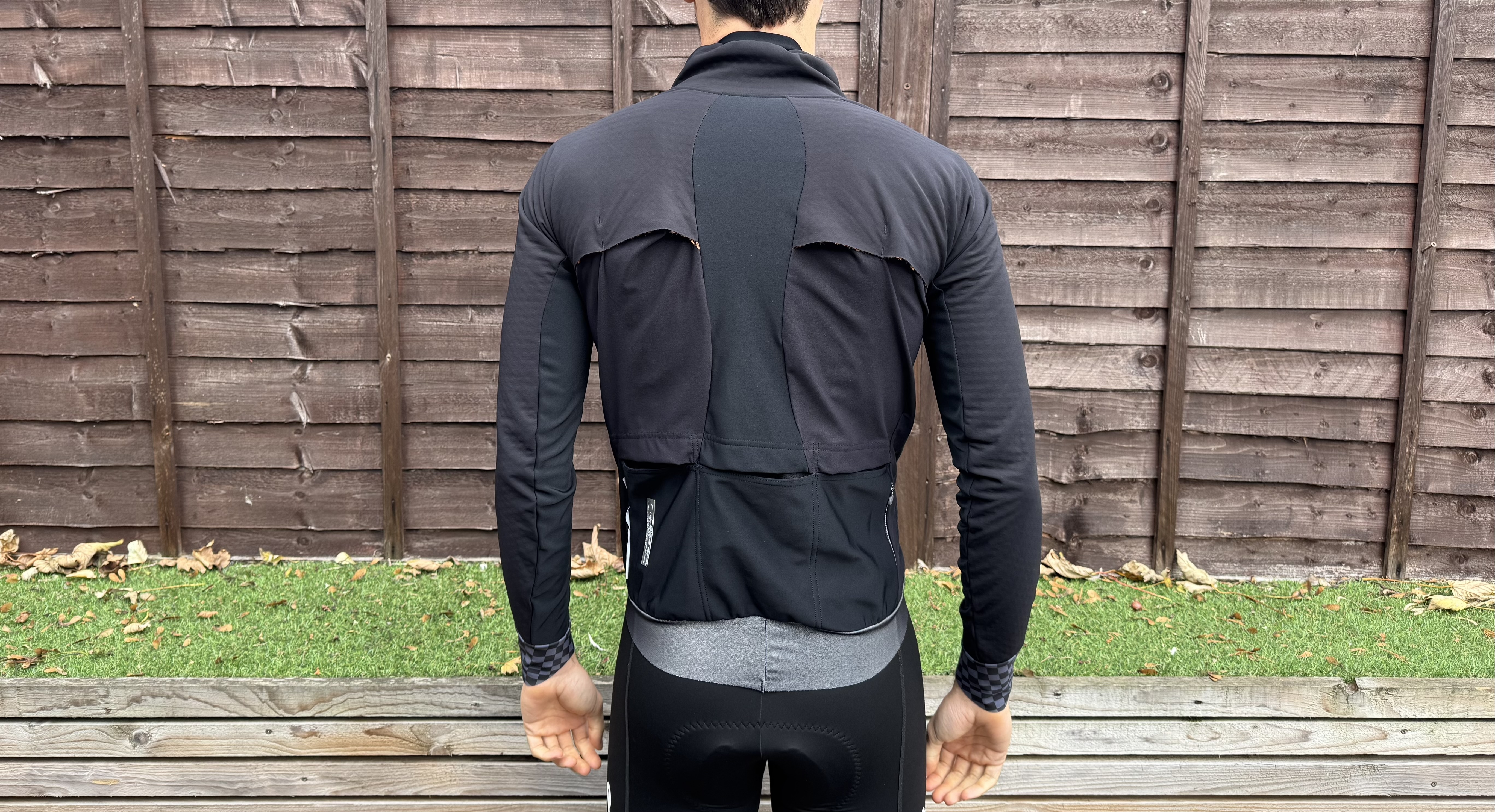
Large reflective rear panel and vents are visible here
However there is a flaw in this if the weather is hotter than your body temperature, which is not uncommon in high summer on the continent. This is where it works very well for winter riding. When you keep the jacket zipped up, there is a warm insulating layer of air which means that the gilet has no impact on temperature. The jacket itself keeps you nice and warm. However, if you start to get too warm, you unzip either from the top or bottom of the jacket to expose the gilet. At this point there is a big temperature gradient of a hot body and a cool surround, so you can shed excess heat very quickly.
In low-teen degrees Celsius this is fantastic; when climbing at lower speeds as you can cool down very effectively. The jacket does feature front and rear ventilation sections, but in reality I didn’t find these provided much in the way of heat extraction. There is some at higher speeds, but at that point I was not really in need of cooling. At the rear of the jacket the material used is also a bit thinner and a touch more breathable. As an overall design feature this is great, as the front of the jacket faces the brunt of the elements, whereas the rear is reasonably protected outside of the worst rain.

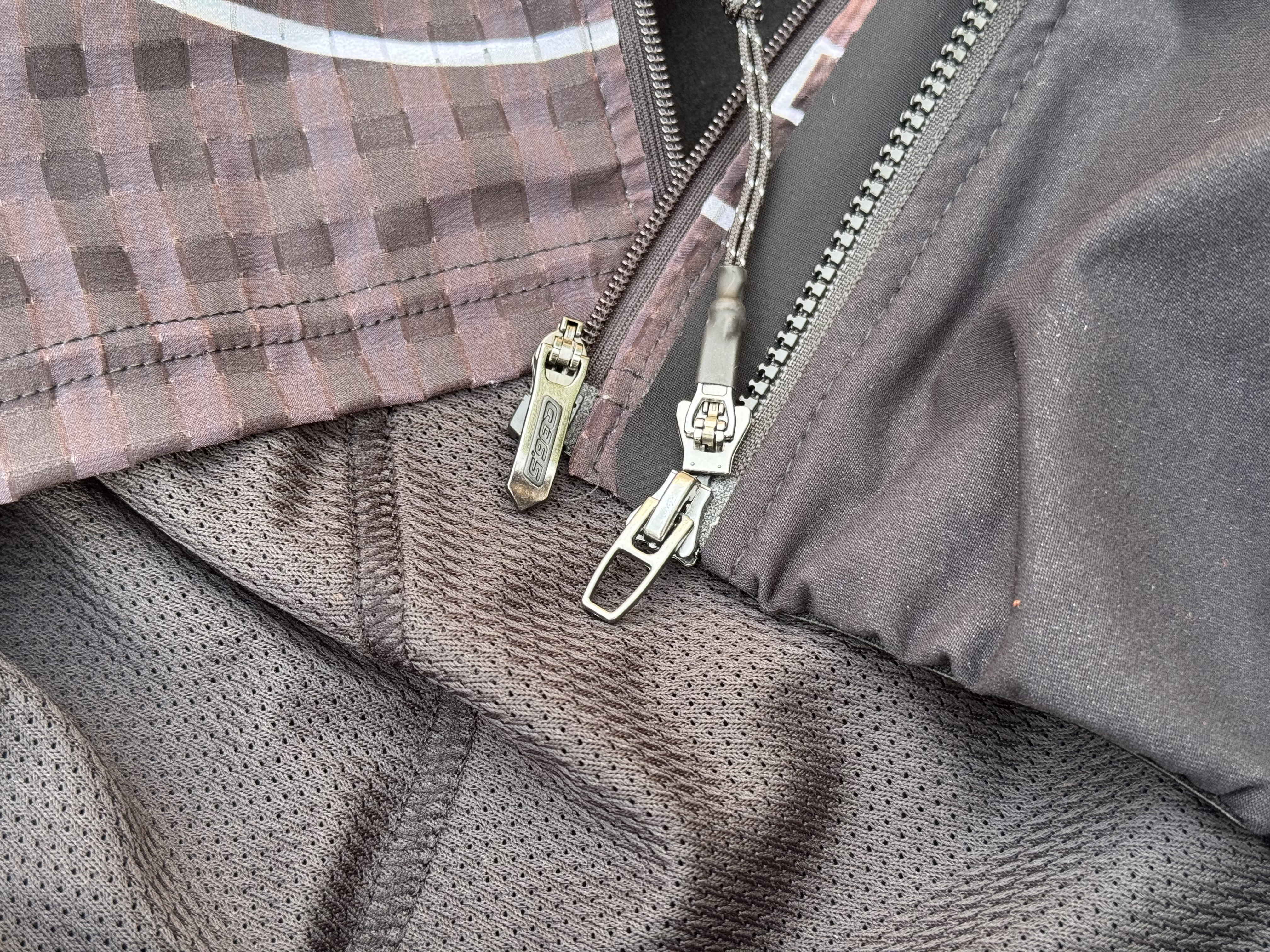
At the front of the jacket is where most of the weather proofing magic occurs. On the shoulders, chest, and on top of the arms there is a very light fleece fibred material inside of the jacket. This is not as heavy duty as the standard Dottore Termino, but more substantial than the Dottore Hybrid line. It’s placement is exactly where it is needed to prevent the ingress of cold air, while the underside of the arms where I often get too hot, is a far lighter material. All of this area uses a 5000m water column rating waterproof membrane externally, which in light to standard showers is highly effective at beading water off the fabric. In heavier rain, the insulation properties mean that frankly you don’t exactly cool down. The benefit here is that the waterproofing does not result in a lack of breathability as can often happen in the post-PFAS era of waterproofing.
There are other very practical features in addition to all of this. The zips themselves are proprietary, and work brilliant. They open or close very easy and use a pull string to make them easy to use with gloves. The inner zip for the gilet is not quite as easy to use but that’s because the gilet does not stay in place as easily as the rest of the jacket.
Sleeve cuffs and neck hem are all soft touch and stay very secure while the neck is not at all constricting thanks to the construction there. A large reflective panel at the rear hem is another nice feature but overall I do think the jacket lacks reflective detailing especially considering it comes only in black.
The pockets are effective, large and well positioned for easy access while the upper flaps do keep items secure without being tough to access. A zip-up valuables pocket is present and as ever appreciated for keys.
Value & conclusion
At £450/$600/€450, the Mediterranea is definitely on the more expensive side of the pricing spectrum. The 2025 Castelli Alpha 150 uses similar construction and principles and comes in at £380, while Rapha’s new Shadow Jacket is £325 but far less versatile featuring no internal gilet system. Assos has the excessively priced Equipe Johdah Ultraz at an eyewatering £630 though, making the Mediterranea look almost reasonable.
There are of course plenty of better value options, while a thermal jersey and a gilet can provide a similar level of protection for often a cheaper price. The attraction of the Mediterranea however is just how effective it is at expelling excess heat, almost more so than just exposing your skin to the elements.
Another reason for the increased price is the inclusion of almost entirely proprietary materials and components. Even simple elements like the zips are better than any YKK offerings I’ve used which are the industry standard. While for those who are conscious of their environmental impact within cycling, the fact that all materials and labour is done within 350km of the factory and recycled fibres are used does boost the environmentally conscious credentials. This comes often with increased cost of labour and a less competitive pricing field for fabrics, but in the current climate for those who can afford to do so it does make sense to spend on something that takes these factors into account.
It also a very good jacket for most ridable winter cycling conditions. Many of us will resort to the indoors once the heavens open properly or the temperatures drop below 0˚C, so for conditions outside of that the Mediterranea is really good. But I can’t call it good value.
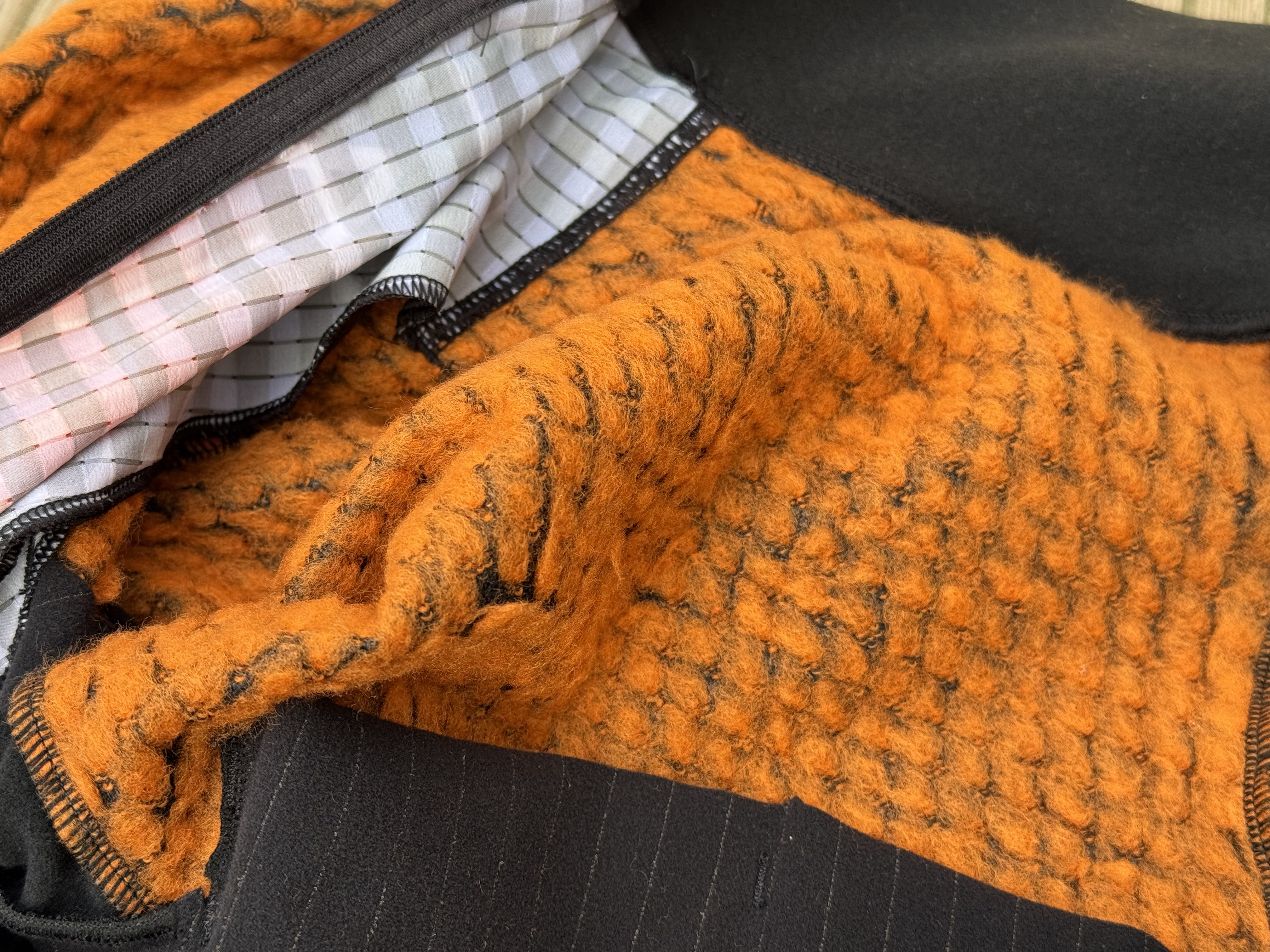
The internal fleece fibres do well to trap heat as well as allowing air circulation
The Dottore Termico Light Mediterranea Jacket is a very interesting piece of kit. It is the first winter cycling jacket that feels appropriate for the entire range of conditions that I feel comfortable riding in during the winter. At 12˚C many jackets are far too warm, while below 0˚C frankly I’m riding inside or off-road where lower speeds decrease ventilation.
A host of clever fabrics result in a brilliantly comfortable and effective jacket with all the useful features I could ask for. Add to that the company has a host of environmentally conscious elements to production which is always a nice touch.
The problem is the price, it is very high, and likely too high for most of us. Still, it's a truly great jacket, and for those who can afford to spend that on an item, I have no qualms recommending they do so on this one. For those looking for better value, a good base layer, thermal jersey, and rain proof gilet from Van Rysel will be cheaper and still pretty effective.
Andy is a Sport & Exercise Scientist, fully qualified and experienced Cycling Coach, Sports Director, Freelance Writer, and Performance Consultant. He spent 3 years riding for a UCI cycling team and 7 years as a BC Elite rider, competing in prestigious events such as the Tour of Britain and the Volta a Portugal.
Graduating with a first-class honours degree in Sport & Exercise Sciences, he continues to pursue his interest in research in the field of Sport Science alongside managing his coaching business, ATP Performance. He also works as a Wind Tunnel operator and Performance Consultant at the Silverstone Sports Engineering Hub, working with individuals, teams, and businesses to optimise performance and develop products.
You must confirm your public display name before commenting
Please logout and then login again, you will then be prompted to enter your display name.
